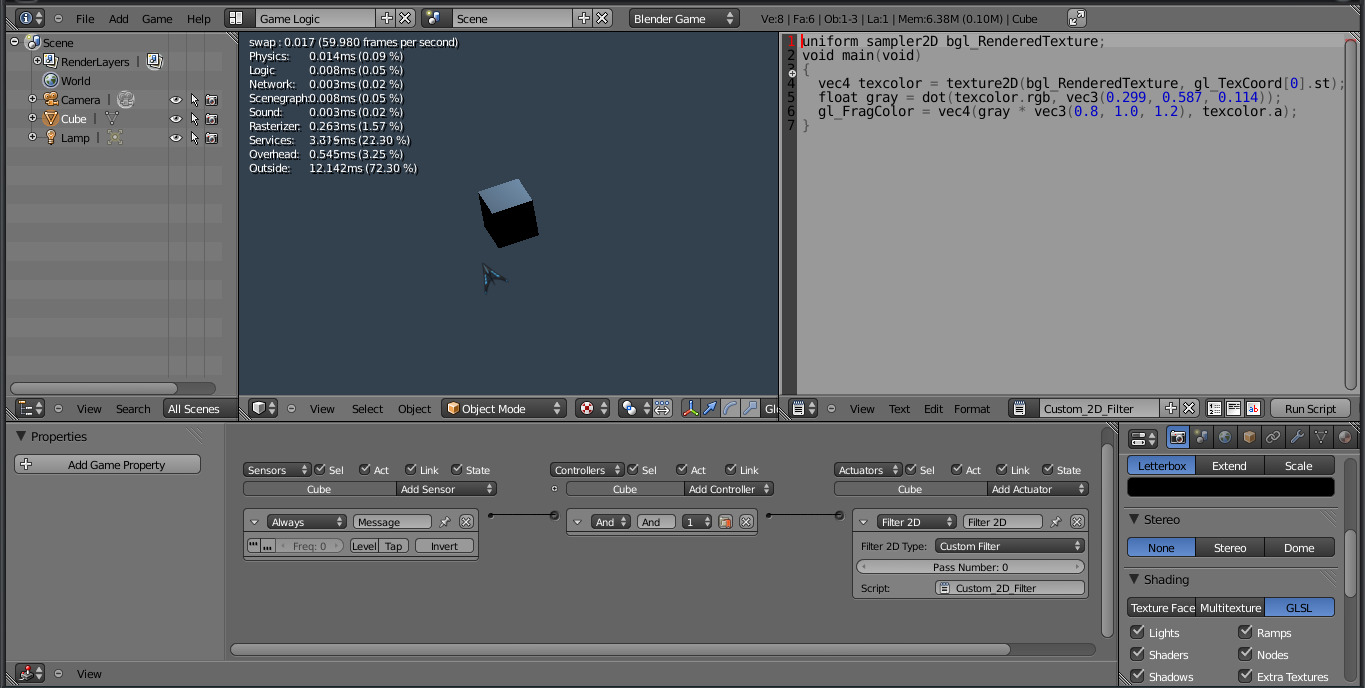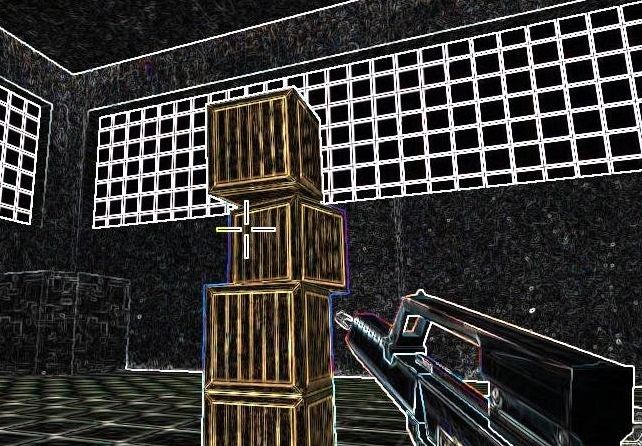Filter 2D Actuator¶
2D Filter s are image filtering actuators, that apply on final render of objects.
Filter 2D Type
Select the type of 2D Filter required.
- Custom Filter
- Invert
- Sepia
- Gray Scale
- Prewitt
- Sobel
- Laplacian
- Erosion
- Dilation
- Sharpen
- Blur
- Motion Blur
- Remove Filter
- Disable Filter
- Enable Filter
Only one parameter is required for all filters:
- Pass Number
- The pass number for which this filter is to be used.
Details of the filters are given in the descriptive text below.
Motion Blur¶
Motion Blur is a 2D Filter that needs previous rendering information to produce motion effect on objects. Below you can see Motion Blur filter in Blender window, along with its logic bricks:

2D Filters: Motion Blur.
You can enable Motion Blur filter using a Python controller:
from bge import render
render.enableMotionBlur(0.85)
And disable it:
from bge import render
render.disableMotionBlur()
Note
Your graphic hardware and OpenGL driver must support accumulation buffer (glAccum function).
Built-In 2D Filters¶
All 2D filters you can see in 2D Filter actuator have the same architecture, all built-in filters use fragment shader to produce final render view, so your hardware must support shaders.
- Blur, Sharpen, Dilation, Erosion, Laplacian, Sobel, Prewitt, Gray Scale, Sepia and Invert
- Are built-in filters. These filters can be set to be available in some passes.
To use a filter you should:
- Create appropriate sensor(s) and controller(s).
- Create a 2D Filter actuator.
- Select your filter, for example Blur.
- Set the pass number that the filter will be applied.
To remove a filter on a specific pass:
- Create appropriate sensor(s) and controller(s).
- Create a 2D Filter actuator.
- Select Remove Filter.
- Set the pass number you want to remove the filter from it.
To disable a filter on a specific pass:
- Create appropriate sensor(s) and controller(s).
- Create a 2D Filter actuator.
- Select Disable Filter.
- Set the pass number you want to disable the filter on it.
To enable a filter on a specific pass:
- Create appropriate sensor(s) and controller(s)
- Create a 2D Filter actuator.
- Select Enable Filter.
- Set the pass number you want to enable the filter on it.
Custom Filters¶

2D Filters: Custom Filter.
Custom filters give you the ability to define your own 2D filter using GLSL. Its usage is the same as built-in filters, but you must select Custom Filter in 2D Filter actuator, then write shader program into the Text Editor, and then place shader script name on actuator.
Blue Sepia Example:
uniform sampler2D bgl_RenderedTexture;
void main(void)
{
vec4 texcolor = texture2D(bgl_RenderedTexture, gl_TexCoord[0].st);
float gray = dot(texcolor.rgb, vec3(0.299, 0.587, 0.114));
gl_FragColor = vec4(gray * vec3(0.8, 1.0, 1.2), texcolor.a);
}


